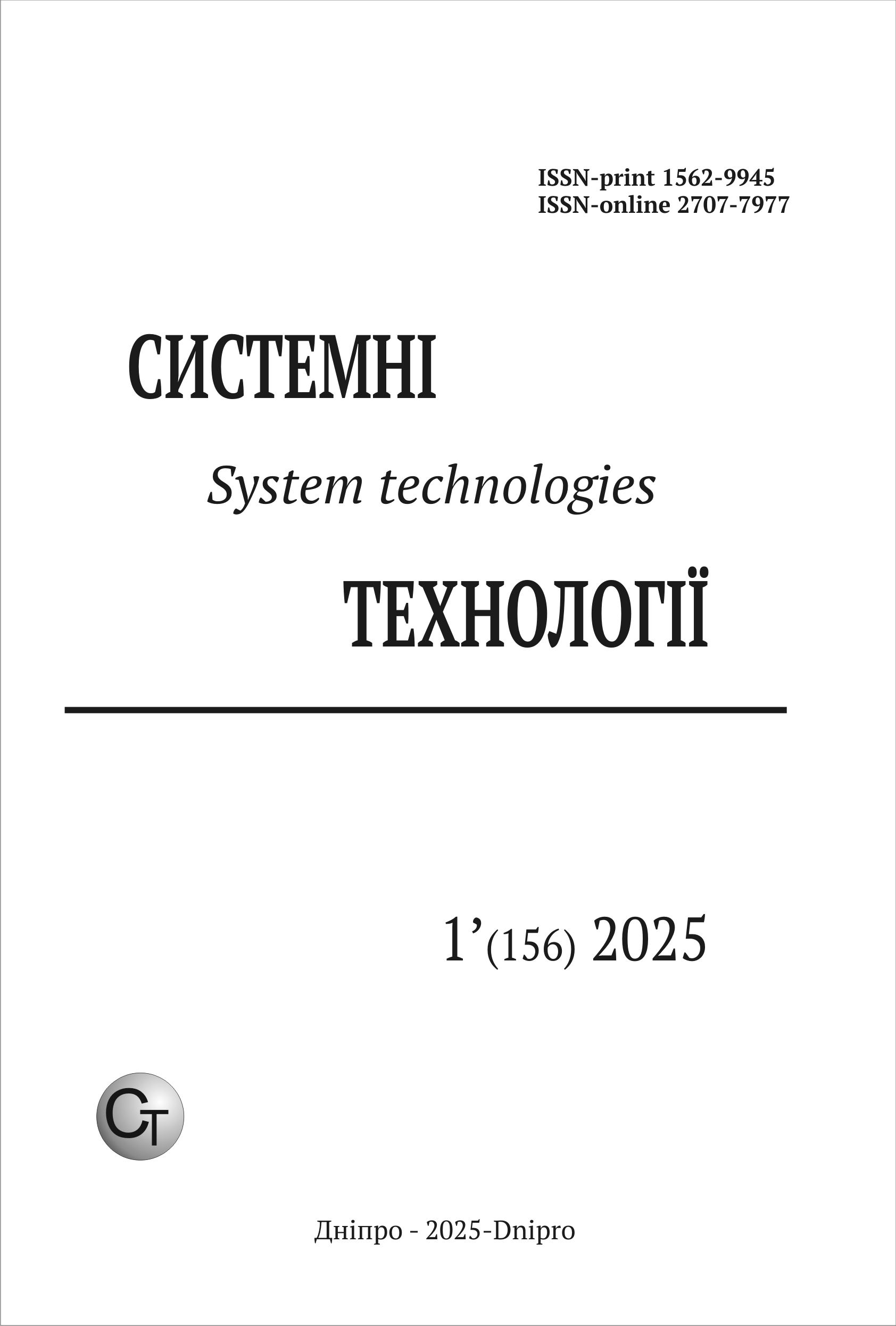ENHANCING THE CORROSION RESISTANCE OF Al-Zn-Mg-Cu ALUMINUM ALLOYS THROUGH MODIFICATION WITH TITANIUM CARBIDE POWDER
DOI:
https://doi.org/10.34185/1562-9945-1-156-2025-19Keywords:
aluminum alloys, corrosion resistance, alloy modification, titanium carbide, physical and mechanical properties, corrosion testsAbstract
Improving the characteristics of industrial alloys, particularly their corrosion resistance, is a relevant task for both metallurgists and materials science specialists. The implementation of new technologies and the selection of materials for specific operating conditions stimulate the development of technological methods for altering the characteristics of base alloys. The investigation and application of new effective modifiers and modification technologies represent an important research direction. Under certain operating conditions, aluminum alloys, particularly the Al-Zn-Mg-Cu system, are subjected to significant corrosive influences, which negatively affect their mechanical properties and longevity. Therefore, the challenge lies in the necessity to develop new approaches and technologies. Specifically, this study proposes a method for modifying the alloys using titanium carbide powder and investigates the effect of this modification on the corrosion resistance of the studied alloy. The aim of the work is to establish the relationship between the structure, physical-mechanical properties, and corrosion resistance. To achieve this goal, modification of alloys V93 and V95 with titanium carbide powder was carried out, and the microstructures and corrosion resistance before and after modification were studied. Corrosion tests, including laboratory methods, encompassed the determination of general, intergranular, and corrosion cracking, which allowed for the assessment of the effectiveness of the proposed modification method. The results obtained confirmed the effectiveness of modifying the studied alloys with titanium carbide of 15 µm particle size. Observations of corrosion processes indicated a reduction in overall corrosion, with the area of corrosion sites decreasing from 70% to 50% after modification. There was also a significant reduction in intergranular corrosion in alloy V95, indicating an improvement in its corrosion resistance. In both modified alloys, intergranular corrosion was not observed, and corrosion cracking of the base metal was absent during the 60-day test period. The test results indicate an increase in corrosion resistance after modification.
References
Venher, V.V. (ed.). (2024). Rozvytok tytanovoi ta aliuminiievoi promyslovosti Ukrainy na innovatsiinii osnovi: perspektyvy ta obmezhennia. DU "In-t ekon. ta prohnozuv. NAN Ukrainy". https://tinyurl.com/ief-org-24
Kalinina, N.Ye., Nykyforchyn, H.M., Kalinin, O.V., Marukha, V.I., & Kyryliv, V.I. (2017). Struktura, vlastyvosti ta vykorystannia konstruktsiinykh nanomaterialiv. Prostir-M. https://nvd-nanu.org.ua/1d77909f-518b-24f6-e984-1a83de010161/
Nosova, T. V., Mamchur, S. I., Moroz, Y. V., & Tkachov, Y. V. (2024). Pidvyshchennia mekhanichnykh vlastyvostei konstruktsiinoi stali 09H2S. Journal of Rocket-Space Technol-ogy, 33(4), 35–40. https://doi.org/10.15421/452405
Ivasyshyn, A. D., Ostash, O. P., & Kuzmenko, M. M. (2014). Vplyv termichnoi obrobky na strukturu i tsyklichnu trishchynostiikist splavu Ti–10, 3Al–3, 0Zr–1, 2Si. Fizyko-khimichna mekhanika materialiv, 50(6). 73–81.
http://dspace.nbuv.gov.ua/handle/123456789/136883
Ostash, O. P., Andreiko, I. M., Markashova, L. I., Holovatiuk, Yu. V., Semenets, O. I., & Kovalchuk, L. B. (2013). Vplyv tryvaloi ekspluatatsii na strukturu i fizyko-mekhanichni vlas-tyvosti aliuminiievykh splaviv typu D16 i V95. Fizyko-khimichna mekhanika materialiv, 49(1), 18–27. http://dspace.nbuv.gov.ua/handle/123456789/135204
Kalinina, N. Y., Nosova, T. V., Tsokur, N. I., Glushkova, D. B., Kirichenko, I. G., & Dem-chenko, S. V. (2022). Increasing corrosion resistance of welded joints as a result of heat treatment. Physical Metallurgy and Heat Treatment of Metals, 3(3 (98)), 28–32. https://doi.org/10.30838/j.pmhtm.2413.270922.28.902
Kalinina, N. E., Hlushkova, D. B., Dzhur, Y. O., Khodyrev, S. Y., Kalinin, V. T., & Pol-ishko, S. A. (2020). Vplyv temperatury termichnoi obrobky na stiikist do mizhkrystalitnoi korozii zvarnykh ziednan. Journal of Chemistry and Technologies, 28(1), 34–41. https://doi.org/10.15421/082005
Kalinina, N. E., Hlushkova, D. B., Voronkov, A. I., Sanin, A. F., Kalinin, A. V., Nosova, T. V., & Bondarenko, O. V. (2020). Special features of the phase composition and structure of aluminum alloys modified by refractory nanocompositions. Functional Materials, 27(3), 508–512. https://doi.org/10.15407/fm27.03.508
Petrashov, O. C., Kapustian, O. Ye., Volchok, I. P., Mitiaiev, O. A., & Akimov, I. V. (2023). Doslidzhennia ta pidvyshchennia mekhanichnykh vlastyvostei syluminu AK7ch. Novi materialy i tekhnolohii v metalurhii ta mashynobuduvanni, (1), 36–42. https://doi.org/10.15588/1607-6885-2023-1-5
Ostash, O. P., Andreiko, I. M., Holovatiuk, Yu. V., Semenets, O. I., & Kovalchuk, L. B. (2014). Nyzkotemperaturna i koroziina tsyklichna trishchynostiikist aliuminiievykh splaviv D16ATNV i V95T1 pislia tryvaloi ekspluatatsii. Fizyko-khimichna mekhanika materialiv, (50,№ 3), 38-44. http://nbuv.gov.ua/UJRN/PHKhMM_2014_50_3_6
Kalinina, N. Ye., Nosova, T. V., Mamchur, S. I., Tsokur, N. I., & Komarov, M. O. (2021). Doslidzhennia protsesu modyfikuvannia lyvarnykh aliuminiievykh splaviv. Bulletin of Khar-kov National Automobile and Highway University, 94, 55. https://doi.org/10.30977/bul.2219-5548.2021.94.0.55
Dzhur, Ye., Kalinina, N., Dzhur, O., Kalinin, O., Nosova, T., & Mamchur, S. (2021). Pid-vyshchennia vlastyvostei deformovanykh aliuminiievykh splaviv modyfikovanykh nanokom-pozytsiiamy. Kosmichna nauka i tekhnolohiia, 27(6), 98–104. https://doi.org/10.15407/knit2021.06.098
Derzhspozhyvstandart Ukrainy. (1996). DSTU 2839-94 (HOST 1583-93). Splavy al-iuminiievi lyvarni. Tekhnichni umovy.
Derzhspozhyvstandart Ukrainy. (2008). DSTU EN 10045-1:2006 Materialy metalevi. Vy-probuvannia na udarnyi vyhyn za Sharpi. Chastyna 1. Metod vyprobuvannia (EN 10045-1:1990, IDT).
Derzhspozhyvstandart Ukrainy. (2008). DSTU EN 575:2006 Aliuminii ta aliuminiievi splavy. Lihatury, oderzhani pereplavlenniam. Tekhnichni umovy (EN 575:1995, IDT).
Franchuk, V. P., Laukhin, D. V., Ziborov, K. A., Rott, N. O., & Fedoriachenko, S. O. (2021). Vplyv teplofizychnykh protsesiv, shcho vidbuvaiutsia v zoni rukhomoho kontaktu, na mekhanichni vlastyvosti poverkhnevoho sharu materialiv. Collection of Research Papers of the National Mining University, 65, 118–129. https://doi.org/10.33271/crpnmu/65.118
Dotsenko, Yu. V., Selivorstov, V. Yu., Nasonov, D. M., & Nasonov, M. M. (2021). Per-spektyvy polipshennia vlastyvostei vtorynnykh lyvarnykh splaviv systemy Al-Si z vy-korystanniam protsesu modyfikuvannia. Information Technologies in Metallurgy and Ma-chine Building, 28–33. https://doi.org/10.34185/1991-7848.itmm.2021.01.022
Hirsch, J. (2019). Aluminium Alloys: Innovative Applications and Potential Markets. Springer.
Altenpohl, C. (2020). Modern Aluminum Alloys: Structure, Properties, and Manufactur-ing. Springer.
Fisichella, M., & Giovanni, S. (2021). Corrosion and Surface Treatment in Aluminium Alloys. CRC Press.
Downloads
Published
Issue
Section
License
Copyright (c) 2025 System technologies

This work is licensed under a Creative Commons Attribution 4.0 International License.















